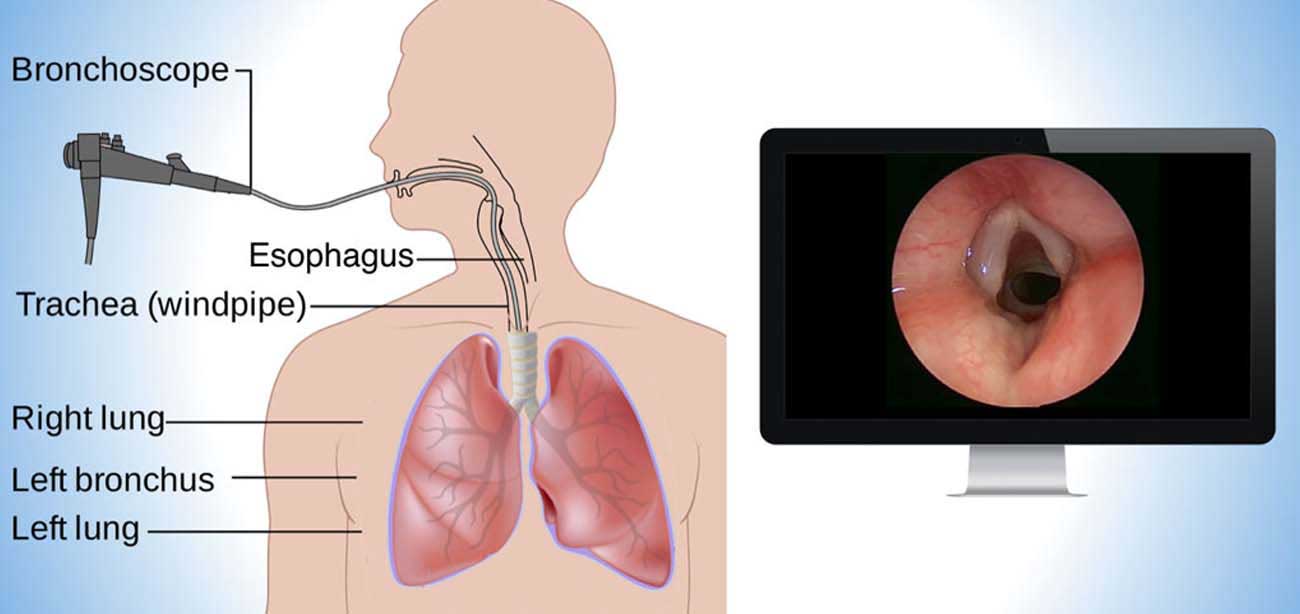Bronchoscopic Lung Cryobiopsy

Interventional pulmonology is a relatively new speciality in pulmonary medicine which uses minimally invasive endoscopic procedures for diagnosis and treatment of diseases of the airways, lungs, and pleura. Procedures for interventional pulmonology include Airway stenting, Rigid Bronchoscopy, Thoracoscopy, Bronchial Thermoplasty, Endobronchial Ultrasound System (EBUS), Cryobiopsy.
Cryosurgery is an advanced interventional pulmonology procedure which uses the cryoprobe. The cryoprobe is an advanced instrument which can freeze the target tissue to a very low temperature. This frozen tissue can then be sampled or removed easily. Cryobiopsy is very useful for sampling of lung tissue (biopsy) or complete removal of tumour mass obstructing the airway. It is a minimally invasive technique and helps in obtaining bigger samples thus giving higher accuracy and avoiding repeat procedures.
In cryobiopsy, a probe is deployed through the bronchoscope and placed near the target tissue. The probe is cooled for a few seconds, freezing and causing the lung tissue around it to stick to the probe. The scope and probe are removed, and bleeding is controlled using a balloon occlusion catheter. Navigation to the target tissue is assisted by Fluroscopy or Radial-EBUS. The procedure is mostly performed under general anesthesia and the patient can go home the same day or next morning after over-night observation.
Cryobiopsy has been proven to be a useful tool for diagnosis of lung cancer and interstitial lung diseases. Unlike traditional biopsy which involves samples less than 2mm, a cryoprobe can obtain lung tissue more than 1cm and in its intact form without any crush artefacts. Also, it has less risk involved when compared to Surgical Lung Biopsy (SLB). With Radial-EBUS and Fluroscopy, it has comparable yield to CT-guided trans-thoracic biopsy without the risk of pneumothorax. When in expert hands, cryobiopsy has no or minimal complications.
 Call For Appointment
Call For Appointment